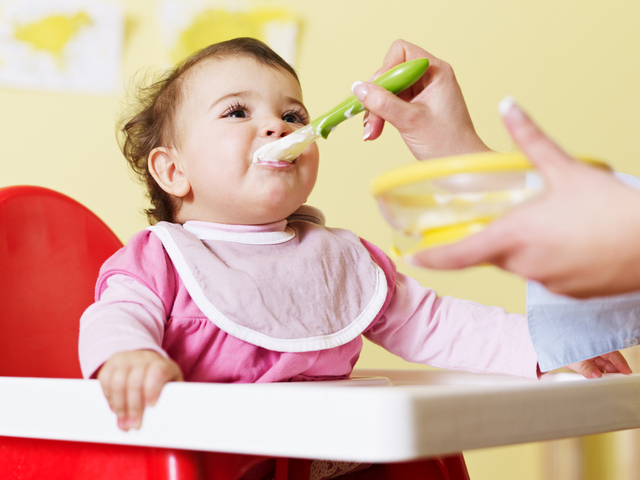A Guide to Homemade Baby Food
Importance of homemade baby food
Homemade baby food is more nutritious than commercially made baby food. This is because the ingredients of many commercially made baby food have been heated to a high temperature before cooling so as to sterilize and prolong their shelf lives. During this process, many nutrients in the baby food are destroyed.
For example, fruits like apples, avocados, bananas and papayas are more nutritious when raw as opposed to when cooked.
Hence, parents may choose to prepare their own baby food at home.
Method of preparation
What you need:
(i) Food blender or processor; this will help you to mash and puree your homemade baby food
(ii) Vegetable steamer
(iii) Glass jars
(iv) Airtight containers
Types of cooking method
(a) Steaming: This is perhaps the best way to retain nutrients. You can steam the food by simply placing it a colander over a pan of boiling water.
(b) Boiling: If you choose this method, do so with the minimum amount of water needed. It is also preferred to use a saucepan with a glass lid. Lifting the lid as the food boils will release the nutrients. Furthermore, try to keep the remaining liquid when you are done and use it to thin the puree if necessary.
(c) Baking: The main advantage of this method is that there is a limited loss of nutrients and the food is easily digestible. You may use this method for sweet potato or squash.
(d) Microwave: The disadvantages of microwave cooking are that food is cooked in small quantities and some foods may lose nutrients at a high rate. The flavour and nutritive values of most vegetables are good in comparison with other methods.
(e) Pressure Cooking: The loss of nutrients is less in this method since little water is used.
Storage of baby food
The table below can be used as a basic guideline.
Do remember to label the containers so that you know what food is inside and how long they have been stored.
It should also be noted that freezing foods will lose some of the flavor and nutritional value.
|
Food Type |
Fridge |
Freezer |
|
Egg yolks |
1 day |
1-2 Months |
|
Meat |
1 day |
1-2 months |
|
Meat-vegetable combination |
1-2 days |
1-2 months |
|
Cooked fruit and vegetables |
2-3 days |
1-3 months |
For optimal quality and nutrient retention, keep frozen baby food cubes in the freezer for a maximum of 3 months.
In the fridge, it is recommended that freshly pureed homemade baby food are stored no longer than 48 hours. This limit ensures that bacteria growth in the baby food is kept to a minimum and flavour of the food is maintained.
Thawing and preparing frozen baby food
It is suggested that you select from the freezer the foods you plan to feed your baby the next day and place in the fridge to thaw. Most thawed food will need to be consumed within 24 hours.
Fruit puree do not need to be warmed before use.
You can warm up other baby food in a dish over boiling water or use a microwave. Remember to stir the food thoroughly to ensure a uniform heating.
Always throw away any leftover reheated food.
How can I puree baby food?
Step 1: Start by cooking the vegetable/fruit either by steaming, boiling, baking, microwaving or pressure-cooking.
Step 2: Take the cooked vegetable or fruit and cut them into smaller pieces if necessary. Put them into the machine (such as a food blender or processor) you have decided to use for pureeing.
Step 3: Set aside the liquid that the vegetable/fruits (except carrots, lettuce, cabbage, spinach or other high-nitrate vegetables) were cooked in. This will be the liquid you add to make the puree.
Adding this liquid also helps to preserve any nutrients that may have leached into the water during cooking. You may also thin with formula, breast milk or plain water.
Step 4: Set your machine to puree or grind and begin to mash the vegetables or fruits.
Foods to try and when
|
|
6 - 8 Months |
8 - 10 Months |
10 -12 Months |
|
Cereal and Grain |
Oat Rice |
Barley Lentils |
Multigrain biscuits |
|
Fruit |
Apples Avocado Apricots Bananas Mango Melons Peaches Pears |
Cherries Nectarines Plums Prunes |
Blueberries Dates Grapes Kiwifruit Papaya Tomato |
|
Vegetables |
Broccoli Carrots Green beans Potato Pumpkin Sweet potato |
Cauliflower Celery Corn
|
Asparagus Broccoli Cabbage Eggplant Onions |
|
Protein |
Chicken |
Beef Lamb Turkey |
Fish Salmon Kidney beans Pork |
|
Dairy |
|
Tofu Yogurt |
|
You may click Baby Food Recipes to view more than 100 baby food recipes.
Check infant feeding schedule if you need help about when to introduce solid food to baby
It takes a village to raise a child !
Join our WhatsApp Parenting Chat Groups By Area in Singapore.









